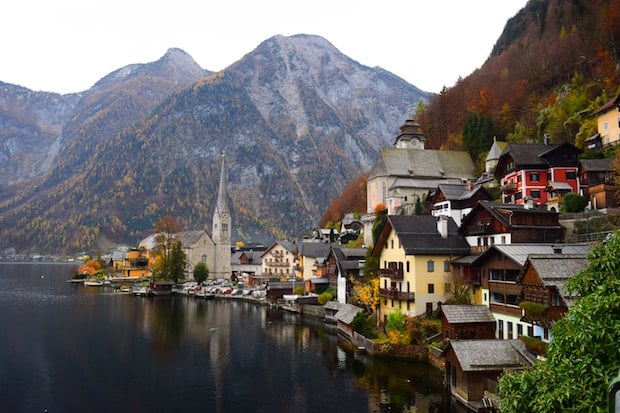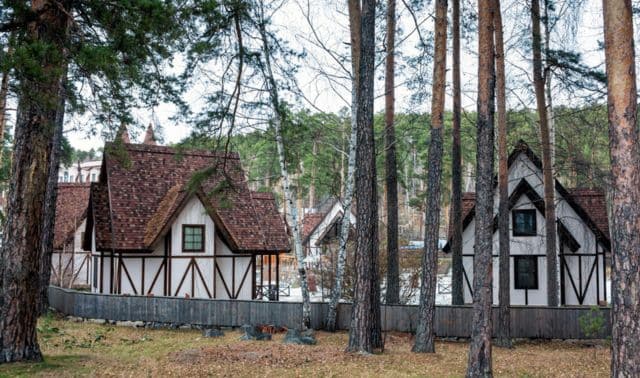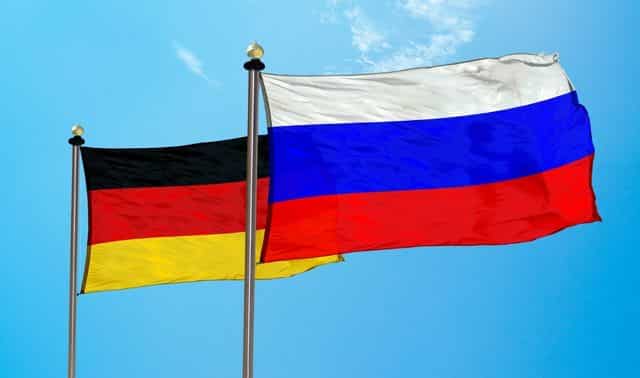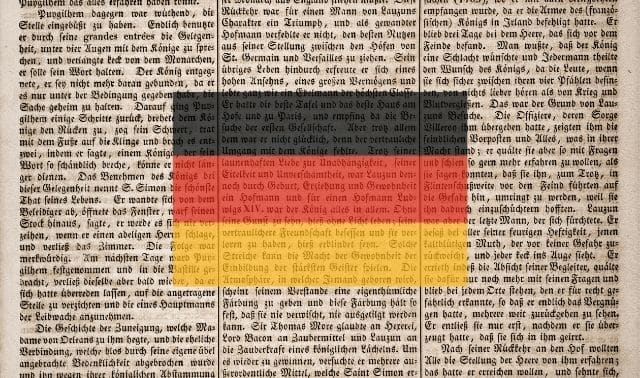Sign up for the Family Tree Newsletter Plus, you’ll receive our 10 Essential Genealogy Research Forms PDF as a special thank you!
Get Your Free Genealogy Forms
"*" indicates required fields

Germany has been pronounced the No. 1 US heritage group in census after census—which means many Americans’ ancestors are immigrants from lands that are today or formerly were in Germany. But some “German” ancestors hail from two other primarily German-speaking nations.
The tiny Alpine confederation of Switzerland and the nation of Austria are these two states. Some two-thirds of the Swiss speak German as their first language, as does nearly every Austrian. These nations, however, have different histories from the many areas making up today’s Germany. Switzerland, on the one hand, was founded by people who just wanted to be left alone in their mountains and valleys—William Tell is their national hero—while the royal house of Austria was a European power in terms of the territory it ruled as well as its dynastic connections throughout the continent. Common to both nations are the unique resources that’ll help genealogists find German-speaking ancestors who lived there—our guide will help you navigate those sources.
Finding Swiss forebears
The area that’s now Switzerland was in the Roman Empire in ancient times and part of Charlemagne’s Frankish Empire in the late eighth and early ninth centuries. Then the emerging crazy quilt of states that made up the Holy Roman Empire included today’s Swiss territory for several hundred years. Late in the 13th century, three mountainous forest cantons declared independence and formed the Swiss Confederation, which took its name from one of the three, Schwyz.
More cantons (political equivalents to American states) joined them over the centuries until Switzerland’s current boundaries were reached in 1815, when the Congress of Vienna reshaped Europe after the defeat of Napoleon I. Switzerland was declared politically non-aligned, a neutrality that was respected in both World Wars. Some 6 million Americans have Swiss ancestry, with a large majority stemming from the German-speaking cantons of Bern and Zurich. French predominates in six of the 26 cantons. There’s one Italian-speaking canton, and about 6 percent of the population speaks Romansch, a Latin-based Romance language and the fourth of Switzerland’s national tongues.
Cantons are divided into municipal communities known as communes (similar to a village or parish). The first thing to remember with Swiss research is that “rights of citizenship”—Heimatberechtigung in German—are based on the commune. These citizenship rights often stayed with a family that left the commune, which means that the original commune kept records (including baptisms, marriages and deaths) for people no longer residing in that commune. It’s estimated today that some 80 percent of Swiss people have citizenship in a commune other than the one where they live.
Emigration from Swiss cantons took several forms. Some Swiss came directly to America beginning around 1700. But a fairly large number were “two-steppers” who originally left Switzerland to repopulate areas along the Rhine River—particularly Alsace and the Palatinate—that were devastated after the Thirty Years War ended in 1648. In another two to three generations, more warfare soured many of these newcomers on life in the Rhine Valley, and they followed reports of economic opportunity to America.
Surname registers
To overcome the difference between residence and citizenship, use the Swiss surname registry, called the Familiennamenbuch der Schweiz in German. For each surname, these compilations list communes where people with that surname lived. If you’re researching less-common surnames, you may be able to pinpoint just a few communes to search. One catch is that if a surname became “extinct” in a commune (for instance, every family of that name emigrated), you won’t find it listed for that commune.
The third edition of this surname registry was published in 1989 as three volumes in each of the four official Swiss languages plus English. It’s out of print but available in major genealogical libraries and online at hls-dhs-dss.ch/famn. A similar compilation, Familiennamenverzeichnis der schweizer Bürger bis 1861, is on CD. Examples of surname publications for localities are listed in the toolkit on page 50.
Church records
The most important Swiss records are parish registers of baptisms, confirmations, communions, marriages and burials. Baptismal records ordinarily contain the names of the child, parents and godparents (who often were relatives), as well as dates of birth and baptism. Records of confirmation, a rite usually performed in the early teen years, list the name and age of the individual and his or her father’s name. Communion records, usually ordered by family group, are the equivalent of church membership lists. Marriage records give the names of the couple as well as their residences, but don’t often name their fathers. Burials give the name of the deceased, dates of death and burial, and age notation—sometimes in years, months and days; other times as an estimate such as “about 40 years old.”
These rich record books, which also sometimes include “family registers” of sacraments for those related to each married couple, typically begin around 1550 for churches that turned Protestant (called Reformed or Evangelical Reformed) in the Reformation. Most Roman Catholic registers begin about 1600. Many Anabaptists (predecessors of today’s Amish and Mennonites) also lived in Switzerland, but they were often persecuted and didn’t keep documentation that might identify members. Still, some Anabaptists show up in Protestant or Catholic church registers, which were used for civil purposes. The Family History Library (FHL) has microfilmed a large number of parish registers. To find your ancestors’ parish, search the online catalog by place and type in the name of the commune. An increasing number of registers are digitized and accessible on the free FamilySearch.org.
Civil registrations
These vital records, as well as family certificates (which document one couple’s vital events in addition to naming their parents and children) are helpful if you’re doing 19th- and 20th-century Swiss research. Standardized registration of vital records began in 1876, though a handful of cantons began to document vital events earlier. The FHL has microfilmed a handful of these. Those not on microfilm are in civil registrar’s offices in the communes. The records are technically available only to Swiss citizens for 120 years, though enforcement varies by canton.
Censuses
For the most part, these were taken irregularly by some communes and cantons in the first half of the 19th century. Those headcounts are available, either on FHL microfilm (such as a 1764 census for the city of Bern) or through the archives of communes or cantons. Unfortunately, surviving census records from 1850 onward are merely statistical.
Tracing Austrian ancestors
Like Switzerland, most of today’s Austria was in the ancient Roman Empire. It later was an eastern outpost of Charlemagne’s empire, which earned it the name Österreich (German for “eastern borderland”). Until the late 1200s, the area remained a backwater on the border between German-speaking peoples to the west, and Hungarians and Slavs on the east. Then Rudolf of Hapsburg, lord of territories in southwest Germany and what became Switzerland, acquired the duchies making up present-day Austria. His ambition culminated in wearing the crown of the Holy Roman Empire.
After Rudolf, the Hapsburg lineage fractured until Emperor Maximilian reunited it in the late 1400s. His grandsons ruled territories including Spain, the Low Countries, much of Italy, Bohemia, Austria and Hungary. The Hapsburg heirs to Austria, Hungary and Bohemia continued as Holy Roman Emperors until the empire was dissolved in 1806. The family ruled until its end on the losing side of World War I. Under its tenure, Hungarians revolted and in 1867, became equal partners in the entity rechristened Austria-Hungary. Post-WWI Austria was a small, almost exclusively German-speaking state as Austria-Hungary was carved up into what’s now Hungary, the Czech Republic, Slovakia, Slovenia, Croatia and Bosnia. Hungary administered part of Burgenland, now one of Austria’s federal states, until the empire broke up.
American records such as censuses and naturalizations may show Austria as the nation of origin and Austrian as the nationality for the many non-German-speaking minorities in the Austrian empire. References to language will help you pinpoint their origins—for example, look outside of today’s Austria for those listing a Slavic language as mother tongue in historical records. But many German-speaking enclaves peppered the eastern edge of Austria-Hungary and its successor states until the end of World War II. The tipoff is that most German-speaking folks in these enclaves were Protestant instead of Catholic, as in the Austrian heartland. For more information on these enclaves of German-speakers who lived outside of Germany proper, see the December 2006 Family Tree Magazine.
You’ll find as many contrasts between Swiss and Austrian genealogy as between, well, Switzerland and Austria as nations. Although Austria’s population (historically and today) has been larger than Switzerland’s, Americans descended from immigrants who originated within today’s Austrian boundaries number only in the thousands—compared to the millions with Swiss ancestry. Still, Austria’s former prominence on the European stage makes its records more important than those numbers might otherwise indicate.
Church records
Austria today is primarily Roman Catholic. Holy Roman Emperors were considered “defenders of the faith” and until the 16th century, most were crowned by the pope. This put the Hapsburgs on the Catholic side in the religious wars of the 1500s and 1600s. A substantial number of Protestants lived within the boundaries of Habsburg territories after the Reformation, but waves of expulsions took place until the emporer decreed a law of toleration in 1781. Before this Patent of Tolerance, Protestants may be in Catholic records. Some Protestant records—primarily Lutheran—may exist after that date.
Unfortunately, the FHL has microfilmed relatively few of Austria’s Roman Catholic parish registers. A substantial number are still housed in the original parishes, making requests for research in these records hit-or-miss. Many Catholic dioceses have archives with websites; look for their addresses on the Catholic Pages of Austria website. Notable exceptions to this dearth of access are the St. Pölten and Vienna dioceses, which have digitized their church records with the help of a European Union grant, and posted them free online at www.matricula-online.eu.
Austria, especially its capital of Vienna, was home to many Jews before World War II. JewishGen’s Austria/Czech Special Interest Group has an online primer on tracing Jews from this area at www.jewishgen.org/austriaczech/ausguide.htm.
Military records
A large volume of military records from Austria’s empire period helps make up for the hard-to-access church records. The FHL has literally thousands of rolls of microfilm of these records, because most men owed at least some military service. They cover men from the districts now part of Austria, not other parts of the empire. In most cases, you’ll need to know your ancestor’s regiment and when he served to find him in the records. To help you determine the regiment, use the FHL’s microfilmed typescript of Otto Kasperkowitz’s Location Index for Recruitment into the Imperial and Royal Austrian Army and Navy Troops. This index shows the locations in which regiments, battalions and other units had permission to recruit. The major categories of military records include:
- Grundbuchblätter (personnel sheets) cover enlisted soldiers, starting with those born as early as 1780. Information about the soldiers includes name, birth year, birthplace, religion, occupation, regiments and dates of service. These records are arranged alphabetically by surname within each Austrian state and cover more than 600 rolls of microfilm.
- Musterlisten und Standestabellen (muster rolls and formation tables) cover soldiers from 1740 to 1820 on more than 5,000 rolls of microfilm. They’re arranged by regiment (except for rolls of officers, which are alphabetical) and give the same information as the personnel sheets, plus names of children and marital status.
- Grundbücher und Stellungslisten (personnel books and formation lists) cover soldiers and officers from 1820 to 1869. They have information similar to muster rolls and like those rolls, are arranged by regiment. The FHL has almost 3,000 rolls of film for these records.
- Dienstbeschreibungen (service records) apply only to the 10 percent of military men who were officers, but give much more detail on each man’s service. They’re organized alphabetically on nearly 3,500 rolls of film.
- Militärkirchenbücher (military church records) were kept for military units and garrisons. They include baptisms, marriages and burials on nearly 600 rolls of film, and are arranged by regiment.
- Seigniorial records: FamilySearch’s digitization initiative is making available these registers of court records kept by feudal lords in Austria. The records include marriage contracts, inventories of estates and transfers of feudal land leases from one generation to another—therefore giving many family relationships. To find them on FamilySearch.org, click Continental Europe next to the map on the home page, then choose Austria from the country list on the left.
Surmounting language barriers
To research most Austrian or Swiss handwritten church records, you’ll want some knowledge of German cursive script and vocabulary. Even printed materials from the first half of the 20th century are in a Gothic font that presents a number of quirks to modern researchers. But don’t let the script or the font keep you from attempting this research. Use the resources listed in the Toolkit and remember that Google will translate most German-language websites into English.
Delving beyond beers and bratwurst to yodeling and Edelweiss brings up the larger question of “what is ‘German’ research?” For most people, German ancestry ends up being an ethnicity defined more by language than by national borders, because they’ll likely have amongst those forebears a “German” who never set foot within the boundaries of a nation called Germany. Knowing the peculiarities of Swiss and Austrian research will prepare you for finding these folks.
A version of this article appeared in the December 2012 issue of Family Tree Magazine.
ADVERTISEMENT




